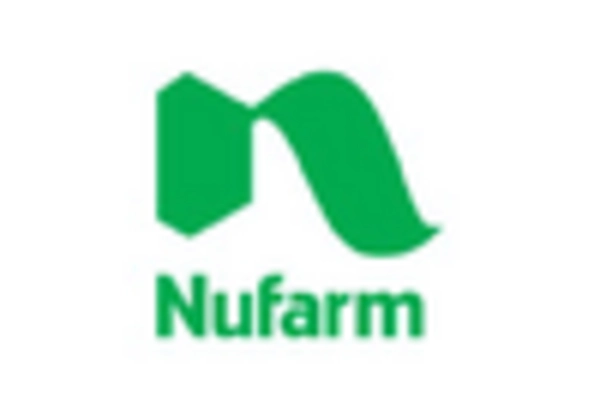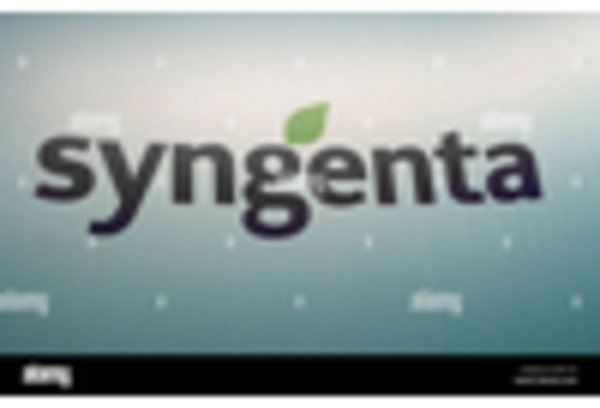Rising Demand for Sustainable Agriculture
The plant growth-regulators market is experiencing a notable surge in demand driven by the increasing emphasis on sustainable agricultural practices. Farmers are increasingly adopting eco-friendly solutions to enhance crop yield while minimizing environmental impact. This shift is reflected in the growing market for organic produce, which has seen a rise of approximately 10% annually in the US. As consumers become more health-conscious, the demand for sustainably grown crops is likely to continue, thereby propelling the plant growth-regulators market. Furthermore, regulatory bodies are encouraging the use of plant growth regulators that align with sustainable practices, which may further stimulate market growth.
Growing Awareness of Crop Health Management
The plant growth-regulators market is benefiting from a heightened awareness of crop health management among farmers. As agricultural practices evolve, there is a growing recognition of the importance of maintaining optimal plant health for maximizing yields. This awareness is leading to increased adoption of growth regulators that promote better nutrient uptake and stress resistance in crops. Educational initiatives and extension services are playing a crucial role in disseminating information about the benefits of these products. Consequently, the market is likely to see a steady increase in demand as farmers seek to enhance their crop management strategies.
Technological Innovations in Crop Management
Technological advancements are playing a pivotal role in shaping the plant growth-regulators market. Innovations such as precision agriculture and smart farming techniques are enabling farmers to optimize the use of growth regulators effectively. The integration of data analytics and IoT devices allows for real-time monitoring of crop health and growth conditions, leading to more informed decisions regarding the application of growth regulators. This trend is expected to enhance productivity and efficiency in crop management, potentially increasing the market size by an estimated 15% over the next five years. As technology continues to evolve, its impact on the plant growth-regulators market is likely to be profound.
Increased Investment in Research and Development
Investment in research and development (R&D) is a critical driver for the plant growth-regulators market. Companies are allocating substantial resources to develop innovative products that cater to the evolving needs of farmers. This focus on R&D is essential for creating effective and safe growth regulators that can address specific agricultural challenges. In the US, R&D spending in the agricultural sector has increased by approximately 8% annually, indicating a strong commitment to innovation. As new products enter the market, they are expected to enhance crop yields and quality, thereby fostering growth in the plant growth-regulators market.
Regulatory Support for Innovative Agricultural Solutions
Regulatory frameworks are increasingly supporting the development and use of innovative agricultural solutions, which is positively impacting the plant growth-regulators market. Government agencies are recognizing the need for effective growth regulators that can help address food security challenges while ensuring safety and environmental protection. This regulatory support is likely to facilitate the approval process for new products, encouraging manufacturers to invest in the development of advanced growth regulators. As a result, the market may experience accelerated growth, with an anticipated increase in product offerings that meet regulatory standards.

















Leave a Comment